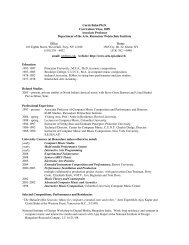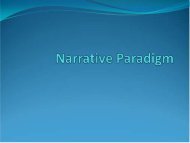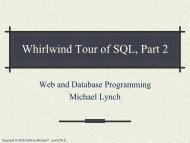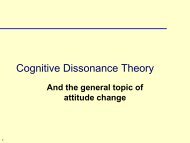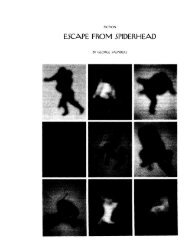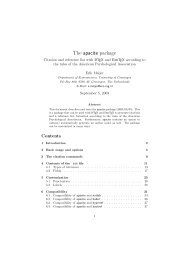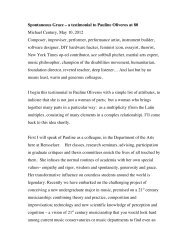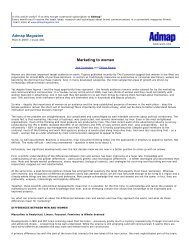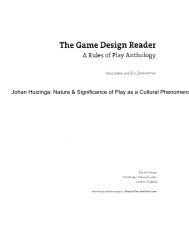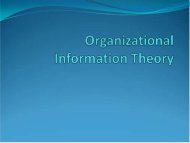The Game Design Document [.pdf]
The Game Design Document [.pdf]
The Game Design Document [.pdf]
You also want an ePaper? Increase the reach of your titles
YUMPU automatically turns print PDFs into web optimized ePapers that Google loves.
cropdusters on demand.<br />
Build a small rural airport, increasing pollution slightly and allowing cropdusters, but less<br />
frequently.<br />
Create a city-wide composing initiative, reducing fertilizer costs.<br />
Require genetically modified foods to be marked, helping your final score if you are all<br />
natural but hurting it if you are not.<br />
Allow cloud seeding, costing money up front but increasing natural rain overall.<br />
Open lands initiative, increasing public open spaces. Increases bee and bird populations.<br />
<strong>The</strong> Environment<br />
Most of the game is about balancing environmental factors. A key component to this is<br />
that different factors will affect each other in unique ways that the players must learn.<br />
Below is a rough draft of the factors, how the player can manipulate them, and how they<br />
will interact with each other.<br />
Water: <strong>The</strong> most simple of the factors, the crop's water level will decrease over time,<br />
faster on sunny days. Water can be increased naturally through rain, or by the player<br />
activating a water nozzle or placing a water sprayer. Ideal water conditions depend on the<br />
crop. Water will decrease faster the more water there is, making it harder to maintain crops<br />
with high water demands.<br />
Pests: <strong>The</strong> bane of any crop, pests should be always kept at a minimum. <strong>The</strong> player can<br />
remove pests by swatting at them or placing a "Big Bag-o-Bugs" which will attract and kill<br />
the bugs. Pests reproduce exponentially, so they must be kept under control or their<br />
population can explode very fast.<br />
Birds: Certain crops don't mind birds, certain crops are eaten by birds. More birds can<br />
reduce pests, but will also reduce bees, and in the case of fruit crops, reduce the yield. Birds<br />
can be attracted to the area with bird houses, or driven away by dogs barking or a scare<br />
crow. <strong>The</strong>se are one time purchases from the town hall.<br />
Pollution: Pollution should be kept at minimal levels to increase crop yield and quality.<br />
Pollution will also drive away birds, pests, and bees. Pollution can be reduced by policies in<br />
the town hall, and by setting aside part of your land for a forest.<br />
Nutrients: Most crops must be continually fertilized, and each crop is different. Increasing<br />
fertilization will increase the yield, but it will also increase pollution and pests. Nutrients can<br />
be spread by a spreader truck throwing fertilizer or sprayed.<br />
Bees: Some crops need to be pollenated, and bees are the answer. Local bee population<br />
can be increased by policy in the town hall, setting aside part of your own land for a forest,<br />
or by hiring beekeepers to place hives. Bee populations are reduced by birds and pollution.<br />
<strong>The</strong> Crops and Difficulty Settings<br />
<strong>The</strong> following common, easily recognizable crops will be featured in the game, in order of<br />
difficulty and deliciousness. <strong>The</strong> crops were picked with the following criterion: Later crops<br />
should be roughly more difficult to grow, be more "interesting" or tasty, and operate on a<br />
seasonal basis. For this reason Apples was struck from the running as I could not figure a<br />
way to incorporate the trees already having been grown and decided the Apple level would


![The Game Design Document [.pdf]](https://img.yumpu.com/30117124/5/500x640/the-game-design-document-pdf.jpg)
